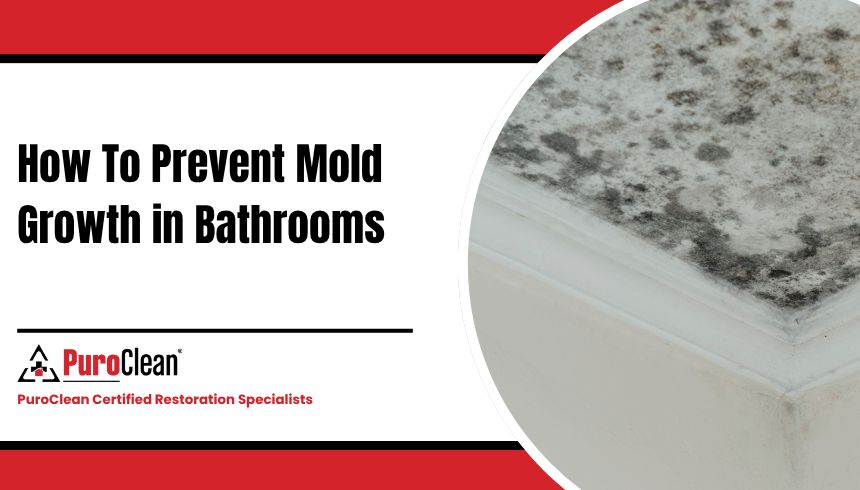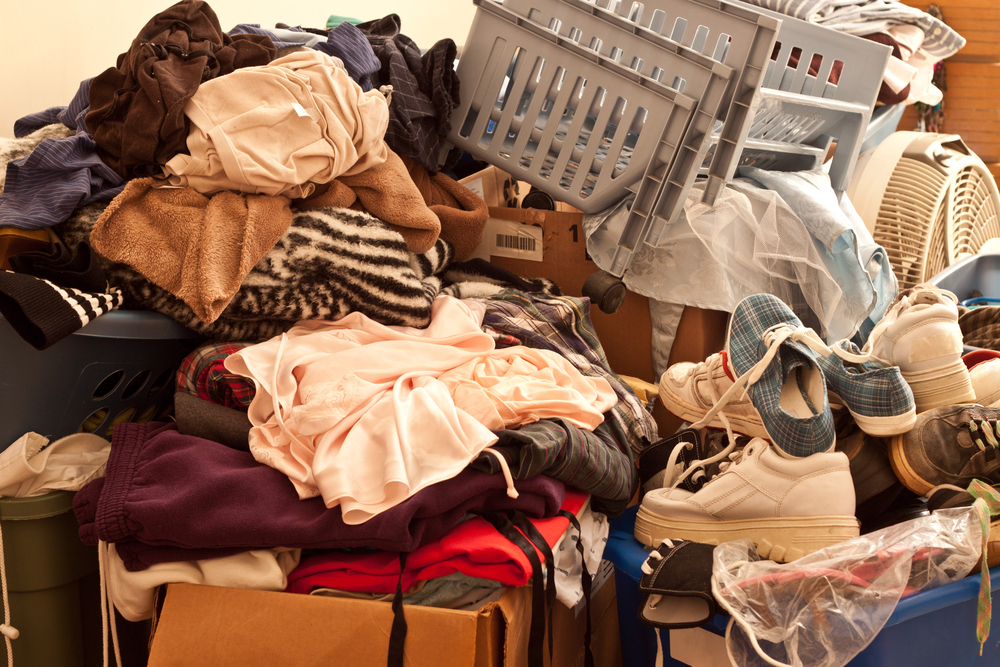
Learning how to prevent mold growth in bathrooms is essential for keeping your home clean and your family healthy. The answer lies in a few smart habits—like improving airflow, fixing leaks quickly, and drying surfaces after every use. Mold thrives in damp, poorly ventilated spaces, so small actions like using an exhaust fan, washing towels regularly, and scrubbing tiles weekly can make a big difference. These steps help reduce humidity and remove the organic materials that mold feeds on.
In this guide, you’ll also discover tips for preventing mold in bathrooms with no sunlight, as well as signs of hidden mold. Remember, keeping your bathroom dry and well-maintained is your best defense. But if mold still appears or spreads out of sight, don’t wait—consider hiring a professional mold removal team to handle the problem safely and thoroughly.
What Causes Mold Growth in Bathrooms?
Bathrooms are highly prone to mold due to the combination of moisture, warmth, and poor ventilation. Understanding the common causes helps in targeting and preventing mold before it becomes a recurring problem in your home.
- High Humidity Levels – Bathrooms trap moisture from hot showers and baths, creating an ideal environment for mold to thrive.
- Poor Ventilation – Limited airflow prevents humidity from escaping, encouraging dampness and mold growth on walls and ceilings.
- Leaky Fixtures or Pipes – Hidden leaks under sinks or behind walls can create constant damp spots, which attract mold over time.
- Wet Towels and Bath Mats – Constantly damp fabrics left in the bathroom can harbor mold and spread spores throughout the room.
- Lack of Regular Cleaning – Dirt and soap scum provide nutrients that mold feeds on, especially on shower tiles and grout.
- Condensation on Surfaces – Steam often condenses on windows, mirrors, and walls, adding to moisture levels if not wiped down.
- Dark Corners and Clutter – Mold thrives in hidden spots with little light and airflow, such as behind cabinets or inside drawers.
7 Essential Tips on How To Prevent Mold Growth in Bathrooms
There are several simple yet powerful ways to keep your bathroom fresh and mold-free. Learning how to prevent mold growth in bathrooms starts with daily habits and a little routine maintenance. Here, you’ll discover practical and effective tips to help create a cleaner, healthier bathroom environment.
1. Use an Exhaust Fan Every Time You Shower
Running a bathroom exhaust fan helps remove moist air that accumulates during showers or baths. Turn it on before entering and keep it running for at least 20 minutes afterward to fully expel humidity. If your fan is old or weak, consider upgrading to a more powerful model. Venting the air outdoors is crucial—fans that recirculate moisture internally don’t help. This simple habit reduces dampness on walls, mirrors, and ceilings, making it harder for mold to grow in your bathroom.
2. Fix Leaks Immediately
Even the smallest leak can lead to major moisture problems over time. Check under sinks, around toilets, and behind tubs regularly. If you notice drips or water stains, fix them as soon as possible. Slow leaks often go unnoticed but provide constant moisture for mold to flourish. Use waterproof sealants and replace worn washers or pipes promptly. Staying proactive with plumbing repairs helps keep hidden mold from forming behind walls or under flooring where it’s harder to detect.
3. Keep the Bathroom Dry After Use
After bathing, take a few minutes to dry wet surfaces like tiles, mirrors, and countertops. Wipe down glass shower doors and corners where water collects. Shake excess water from bath mats and hang towels to dry. Leaving puddles or lingering dampness encourages mold spores to settle and spread. Using a squeegee on shower walls is a quick way to remove water buildup. By drying your bathroom each time you use it, you drastically reduce moisture levels and mold risks.
4. Wash Towels and Mats Regularly
Fabric items like towels, washcloths, and bath mats hold moisture for long periods, which can foster mold. Wash these items weekly in hot water and dry them completely before reuse. Avoid leaving them in damp piles or hanging them too closely together. Choose quick-dry fabrics when possible. Regular laundering removes mold spores, skin cells, and bacteria, making your bathroom more sanitary and less inviting to mold. This tip is simple but essential for mold prevention.
5. Use Mold-Resistant Paint and Materials
Bathrooms benefit from surfaces designed to resist moisture. When renovating or repainting, use mold-resistant paint, which contains anti-microbial agents that deter spore growth. For walls and ceilings, opt for water-resistant drywall or cement board. Silicone caulk around tubs and sinks also resists mold better than traditional materials. These preventative materials make a big difference in moisture-prone environments. Even small upgrades—like changing your shower curtain to a mildew-resistant one—can help protect your space over time.
6. Increase Natural Light and Airflow
Mold hates dry, bright spaces. If possible, open bathroom windows during and after use to let in fresh air and sunshine. Natural light not only discourages mold but also makes the room feel cleaner. If there are no windows, consider installing a skylight or using a fan with a built-in light to keep air moving. Leaving the door slightly open after showers also helps with ventilation. Increasing airflow and light is an easy, passive way to battle bathroom mold.
7. Clean Shower Tiles and Grout Weekly
Soap scum, body oils, and dirt build-up on tiles and grout, creating a perfect home for mold. Scrub your shower walls, floor, and grout with an anti-mold cleaner or a vinegar-baking soda mix at least once a week. Use a toothbrush for tight corners. Apply a grout sealer twice a year to reduce mold’s grip on porous areas. Regular cleaning not only removes visible grime but also keeps spores from settling into bathroom surfaces, where they can spread.
Frequently Asked Questions

Image by Sinhyu from Getty Images on Canva
How can I identify hidden mold in my bathroom?
Hidden mold often reveals itself through musty odors, discoloration on walls or ceilings, or unexplained allergy symptoms. Check behind cabinets, under sinks, and around plumbing fixtures for dampness or staining. If you suspect a hidden mold, professional mold testing can identify its presence and help you address it effectively before it spreads.
How to prevent mold growth in bathrooms that don’t get direct sunlight?
Bathrooms without natural light are more prone to mold. Discover how to prevent mold growth in bathrooms like these by using artificial light with UV capabilities, keeping the space dry, and installing a vent fan. Clean all areas weekly with mold-inhibiting products and avoid leaving damp fabrics inside after use.
Can mold growth in bathrooms cause health problems?
Yes, mold can trigger allergies, respiratory issues, and skin irritation, especially for sensitive individuals. Prolonged exposure to mold spores in damp bathrooms can worsen asthma symptoms and cause coughing or sneezing. Maintaining a mold-free bathroom environment helps protect your family’s health by reducing airborne allergens and preventing mold-related illnesses.
Final Thoughts
Understanding how to prevent mold growth in bathrooms is key to maintaining a healthy and comfortable home environment. By adopting simple habits like improving ventilation, fixing leaks promptly, and regular cleaning, you can keep mold at bay and protect your family’s well-being. If mold persists or spreads, timely professional intervention is crucial to fully eliminate the problem and prevent future outbreaks.
If you’re dealing with mold issues, PuroClean of Zephyrhills is here to help. Our expert mold removal and remediation services ensure a safe, thorough solution. Contact us today to protect your home and family from the harmful effects of mold.



